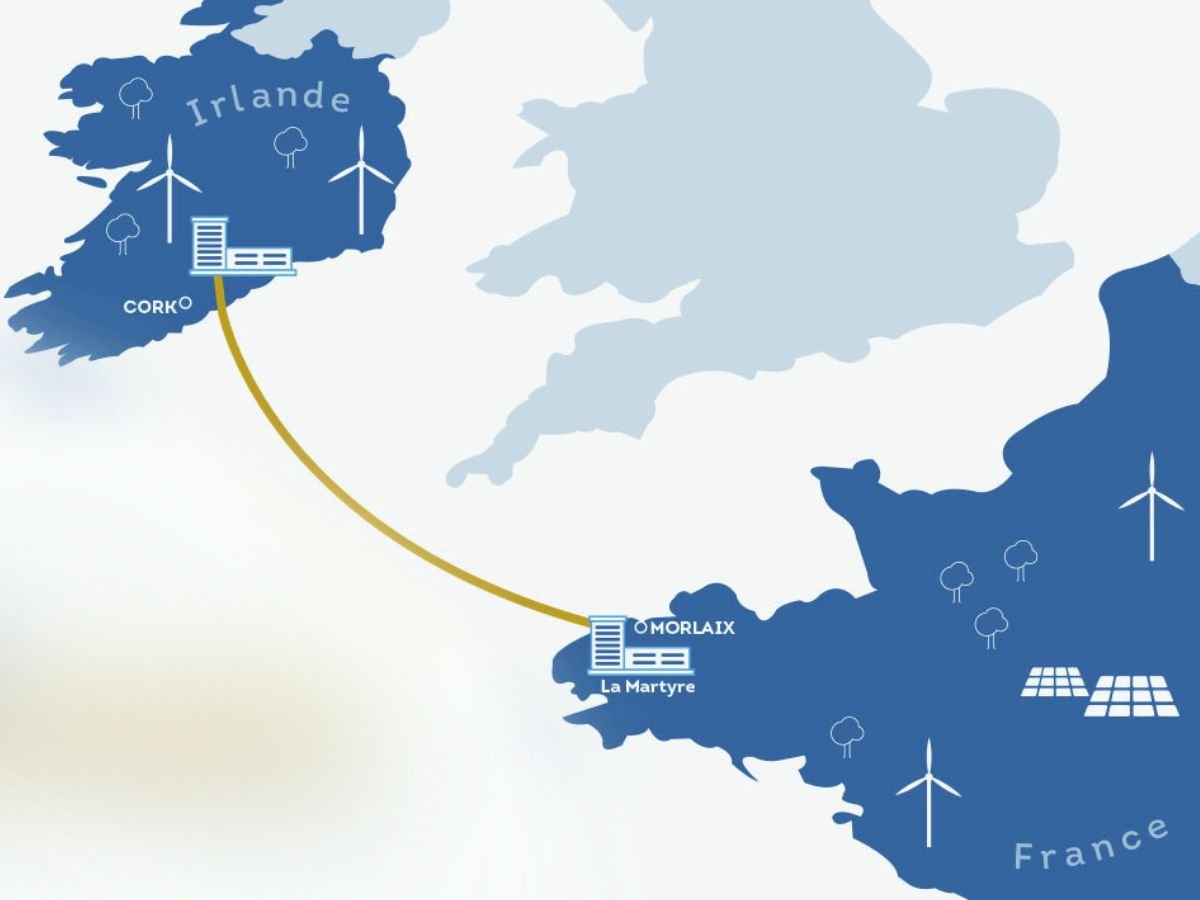Image: Celtic Interconnector.
The Commission for Energy Regulation (CRE) has announced its decision to proceed with the electricity interconnection project between France and Ireland with its Irish counterpart. Although the cost of works has increased, the project is considered beneficial for both countries.
At the beginning of the winter season, which is tense in the European electricity network, solidarity between member states is very essential to transfer electricity according to the needs of each individual. In France, as elsewhere, the boom in renewables and the desire to strengthen the pan-European electricity grid are prompting authorities to promote new interconnection projects. Among other things, it allows for optimization Highly variable generation of wind and solar power and minimize Blackout risks. A country can sell its surplus electricity to its neighbors or receive it if it is in deficit.
According to the operator of the French electricity network RTE, France has 50 cross-border connections that allow electricity to circulate with neighboring countries. New plans are under consideration: a new interrelationship between France and England, Called IFA2 ; The Savoy-Piedmont interconnection between Chambéry and Turin entered partial service in early November, or the project Bay of Biscay.
The Celtic Interconnector: the future link between France and Ireland
Project supported by CRE ” Celtic Interconnector “. This is the first electricity link between France and Ireland, but also the longest and the first to connect a country without a border. Led by RTE and its Irish counterpart, EirGrid, it includes a Direct current high voltage electrical connection (HVDC) is mainly underwater About 575 km. The submerged portion will stretch over about 500 km and both countries will host about 40 km of underground line.
A’s 700 MW capacity (MW), which will connect the French town of La Martyre (Finistere) with Knockraha (County Cork) in Ireland. The French (CRE) and Irish (Commission for Regulation of Utilities / CRU) energy regulators announced the continuation of the project. Why this decision?
Also read this
While English wind turbines aid French nuclear power plants
The project was timely reassessed due to rising costs
This is because both firms have been given an initial contract to re-evaluate the opportunity if the cost of the project increases by more than 20%. However, the initial budget for 2019 is 930 million euros It has now reached 1.4 billion euros (Except for contingency provisions). Q. Tensions in supply markets, especially for cables and stations.
However, both institutions reckoned that the project still brings benefits to both countries. The additional costs of the operation will be split up to 65% by the Irish operator and 35% by the French competitor. In addition, the project received a European grant of 530.7 million euros, approximately 60% of its estimated cost.
Economic and strategic interest
CRE’s decision recalls the economic interest of the project, which will contribute in particular to security of supply and the reduction of Irish gas consumption. The project will contribute to the integration of renewable energies and reduction of CO₂ emissions. The Commission also recalls that this interconnection represents a strategic advantage by creating a link between the Irish electricity network and the EU in the context of Brexit.
Finally, if the final cost of the project is higher than the last valuation, the amount will be distributed equally between the two countries. So the France-Ireland relationship is on the right track. It should enter service at best in 2027.
Also read this
Interconnections: France-Spain power line project reaches major milestone

Tv fanatic. Amateur food maven. Devoted webaholic. Travel lover. Entrepreneur. Evil writer. Beer guru.



